Cultivating Cultural Competency in Nursing
Table of Contents
In an increasingly diverse healthcare landscape, cultural competency in nursing shines as a paramount skill for nurses, guiding them toward providing patient-centered, equitable, and effective care. It transcends mere tolerance, fostering genuine understanding and appreciation of individuals from varied backgrounds, resulting in improved health outcomes and empowered patient experiences. This article delves into the multifaceted nature of cultural competency in nursing, exploring its significance, key components, and strategies for skillful development.
The Tapestry of Culture: Recognizing its Impact on Healthcare
Culture, a vibrant tapestry woven from beliefs, values, practices, and traditions, profoundly shapes our perspectives on health and healthcare. Understanding its intricate threads is crucial for nurses striving to provide patient-centered, equitable, and effective care. Ignoring these nuances can create misunderstandings, impede communication, and ultimately compromise health outcomes.
- Perception’s Palette: Culture colors how individuals perceive symptoms, attribute their cause, and interpret diagnoses. A stomachache may signify “anger” in one culture, while another might link it to “evil spirits.” Misinterpreting such cultural meanings can lead to delayed diagnoses and missed opportunities for intervention.
- Treatment Choices: Healthcare decisions are rarely made in a vacuum. Cultural preferences significantly influence treatment choices, medication acceptance, and end-of-life care. Imposing dominant cultural norms can undermine trust and compliance, potentially jeopardizing patient well-being. Imagine refusing a traditional healing practice deemed crucial by a patient solely based on your cultural lens.
- Communication Threads: Language and communication styles form vital strands in the tapestry. Varying gestures, eye contact, and preferred pronouns can lead to misunderstandings. Consider a culture where direct eye contact is considered disrespectful, while in another, it signifies attentiveness. Failing to adapt communication styles can create barriers and hinder rapport-building.
- Family Dynamics: The intricate braid of family systems and decision-making processes across cultures deserves careful consideration. A patient from a collectivistic culture might involve the extended family in healthcare decisions, while an individualistic culture might prioritize personal autonomy. Respecting these variations builds trust and fosters collaboration in care planning.
Beyond Awareness: Embracing Cultural Competency.
Cultural competency in nursing transcends mere awareness. It’s a dynamic tapestry woven with:
- Knowledge: Deep understanding of specific cultural nuances relevant to your patient population.
- Sensitivity: Respecting, empathizing with, and appreciating diverse perspectives.
- Skills: Effective communication, utilizing interpreters when necessary, and adapting behavior to align with cultural norms.
- Humility: Recognizing your own biases and remaining open to learning and adapting.
- Cultivating this tapestry requires an ongoing commitment to:
- Lifelong learning: Seeking educational opportunities, engaging with diverse communities, and utilizing online resources.
- Self-reflection: Identifying and challenging your own biases through honest assessment and open dialogue.
- Cross-cultural communication: Honing your skills through active listening, adapting styles, and utilizing interpreters thoughtfully.
- Diverse experiences: Volunteering, traveling (if possible), and engaging with individuals from different backgrounds.
- Expert collaboration: Partnering with community leaders, cultural healthcare professionals, and interpreters.
Building this tapestry of cultural competency benefits everyone:
Improved patient satisfaction and trust: Feeling seen, heard, and respected fosters trust and engagement in their care.
Enhanced communication and collaboration: Effective communication leads to better understanding, shared decision-making, and improved health outcomes.
Reduced health disparities: Addressing cultural barriers promotes equitable healthcare access and quality, contributing to closing the health gap.
Greater job satisfaction and reduced burnout: Culturally competent nurses experience increased fulfillment and reduced burnout, leading to better care and a more positive work environment.
By investing in and embracing cultural competency, nurses can ensure that the tapestry of healthcare reflects the diverse threads of individuals and communities they serve. This creates a vibrant, inclusive, and equitable healthcare landscape where everyone can truly thrive.
A Multifaceted Skillset: Embracing the Pillars of Cultural Competency
Cultural competency in nursing is not a singular skill but rather a multifaceted approach encompassing:
- Cultural awareness: The foundation lies in acknowledging and appreciating cultural differences. Nurses must actively seek knowledge about diverse cultures, including beliefs, values, and healthcare practices.
- Cultural knowledge: Building on awareness, nurses acquire an in-depth understanding of specific cultural nuances relevant to their patient population. This involves exploring healthcare experiences within specific cultural contexts.
- Cultural sensitivity: Demonstrating respect, empathy, and openness to different perspectives builds trust and rapport with patients. Culturally insensitive behavior can alienate patients and impede communication.
- Cultural skills: Effective communication, utilizing interpreters if necessary, demonstrating patience and active listening, and adapting communication styles according to cultural norms are essential skills.
- Cultural humility: Recognizing and valuing one’s own cultural biases while remaining open to learning and adapting is crucial. Accepting limitations and seeking expertise when needed demonstrates true cultural humility.

Charting the Course: Strategies for Cultivating Cultural Competency.
The journey toward cultural competency in nursing is an ongoing voyage requiring dedication and continuous learning. Like any successful expedition, effective strategies are crucial for navigating the path. Here are some key tactics to cultivate cultural competency and enhance your skills:
Embrace Lifelong Learning: Knowledge is the first mate on this journey. Seek out educational opportunities to explore diverse cultures, including:
- Formal training: Enroll in workshops, online courses, or certificate programs focusing on cultural competency in healthcare.
- Community engagement: Volunteer in diverse communities, attend cultural events, and engage in dialogue with community leaders.
- Online resources: Utilize reputable websites, podcasts, and documentaries to gain insights into various cultural perspectives.
Reflect on Your Compass: Before setting sail, it’s crucial to examine your cultural baggage. Engage in self-reflection exercises to:
- Identify your biases: Utilize bias recognition tools and engage in honest self-assessment. Recognize how your cultural background shapes your perceptions and interactions with others.
- Challenge assumptions: Don’t make assumptions about patients based on their cultural background. Actively seek to understand individual experiences and perspectives.
- Embrace your limitations: Acknowledge that you won’t have all the answers, but be open to learning and accepting help when needed.
Hone Your Communication Skills: Communication is the anchor in this journey. Develop cross-cultural communication skills by:
- Active listening: Practice giving patients your full attention, focusing on both verbal and nonverbal cues.
- Utilizing interpreters: When necessary, involve qualified interpreters who understand both the cultural nuances and healthcare terminology.
- Adapting your style: Consider cultural variations in communication styles, such as preferred pronouns, directness, and body language.
Seek Diverse Experiences: Expand your horizons by:
- Volunteering: Volunteer in culturally diverse settings like clinics, community centers, or language classes.
- Traveling: Experience different cultures firsthand through travel, even within your region.
- Engaging with diverse individuals: Seek opportunities to interact with people from different cultural backgrounds in your everyday life.
Seek Expert Collaboration: Don’t chart your course alone. Partner with cultural experts, including:
- Community leaders: Build relationships with leaders from the communities you serve to gain insights and perspectives.
- Cultural healthcare professionals: Collaborate with nurses, doctors, or therapists with expertise in specific cultural groups.
- Interpreters: Utilize their fluency in both language and cultural nuances to bridge communication gaps.
Engage in Self-Reflection: This journey is continuous, requiring ongoing reflection. Regularly assess your progress by:
- Seeking feedback: Ask colleagues and patients from diverse backgrounds for honest feedback on your interactions.
- Evaluating your practice: Reflect on challenging situations and identify areas for improvement.
- Celebrating successes: Acknowledge your progress and celebrate your achievements in becoming more culturally competent.
By incorporating these strategies, you can embark on a meaningful journey towards cultural competency in nursing. Remember, it’s not about arriving at a destination but about cultivating a lifelong commitment to learning, humility, and understanding. Let this compass guide you as you build bridges, navigate diverse healthcare landscapes, and ultimately, provide culturally sensitive and equitable care to all.
The Fruits of Cultivation: Benefits of Culturally Competent Care
Investing in cultural competency in nursing isn’t simply a moral imperative; it’s a path paved with tangible benefits for both patients and healthcare professionals. Let’s explore the bountiful harvest reaped when cultural understanding takes root:
- Ripened Patient Satisfaction and Trust: Imagine a patient feeling truly seen, heard, and respected amidst their healthcare journey. Culturally competent care fosters this very experience. By acknowledging diverse beliefs and preferences, nurses build trust, leading to increased patient satisfaction and a willingness to engage in their care. This trust translates into better adherence to treatment plans and improved health outcomes.
- Flourishing Communication and Collaboration: Communication breakdown often stems from cultural misunderstandings. Culturally competent nurses bridge these gaps through effective communication strategies. This includes active listening, utilizing interpreters, and adapting communication styles. The resultant clarity empowers patients to participate actively in care planning and decision-making, fostering a collaborative patient-centered approach.
- Reduced Health Disparities: Equity in Bloom: Cultural barriers often create disparities in healthcare access and quality. Culturally competent nurses act as bridges, dismantling these barriers by understanding and addressing patients’ unique needs and concerns. This leads to more equitable healthcare delivery, closing the gap in health outcomes between diverse populations.
- Job Satisfaction & Reduced Burnout: A Nurturing Environment: When nurses can effectively connect with and care for patients from diverse backgrounds, they experience a sense of fulfillment and purpose. This translates into increased job satisfaction and reduced burnout. It’s a win-win, as empowered nurses provide better care, leading to more positive feedback and reinforcing the cycle of satisfaction.
- Beyond the Individual: A Thriving Healthcare Ecosystem: The benefits of cultural competency extend far beyond the individual patient-nurse interaction. A healthcare system where cultural understanding is the norm fosters trust, inclusivity, and innovation. This creates a positive environment for patients, staff, and the community as a whole.
Investing in cultural competency is not just about cultivating individual skills; it’s about nurturing a healthcare ecosystem that thrives on inclusivity and understanding. The fruits of this investment are evident in improved patient experiences, reduced health disparities, and a more positive working environment for all. It’s time to let cultural competency blossom and reap the rewards of a truly patient-centered, equitable healthcare system.
- Navigating the Challenges: Addressing Barriers to Cultural Competency
The path to cultural competency in nursing is not without its challenges. These thorns can hinder progress, but with mindful navigation, they can be overcome. Let’s examine some key barriers and potential solutions:
- Resource Scarcity: Time and Money: Nurses often juggle heavy workloads and need more dedicated time for cultural competency training. Additionally, institutions may need to prioritize budgets for training or provide adequate resources.
Solution:
- Advocate for dedicated time in schedules for cultural competency training.
- Seek out free or low-cost online resources and engage in peer-to-peer learning opportunities.
- Encourage institutions to invest in diverse learning platforms and cultural competency experts.
Personal Biases: Unconscious Obstacles: Recognizing and overcoming our own cultural biases can be difficult. These unconscious assumptions can influence our interactions with patients.
Solution:
- Engage in self-reflection exercises and utilize bias recognition tools.
- Participate in workshops and discussions focused on identifying and confronting personal biases.
- Seek feedback from colleagues and patients from diverse backgrounds.
Limited Exposure: Bridging the Knowledge Gap: Nurses may need more access to diverse learning opportunities tailored to their specific patient populations. This can limit their understanding of specific cultural nuances.
Solution:
- Connect with community organizations and cultural leaders for firsthand insights.
- Utilize online resources specific to the demographics served.
- Participate in cultural immersion programs.
- Seek mentorship from cultural healthcare professionals.
Systemic Barriers: Institutional Obstacles: A lack of institutional support can be a significant hurdle. Inflexible staffing and scheduling may hinder participation in training or cultural engagement activities.
Solution:
- Advocate for policy changes that prioritize cultural competency within the institution.
- Collaborate with colleagues to create a shared understanding of the importance of cultural understanding.
- Encourage leadership to invest in resources and infrastructure to support cultural competency initiatives.
Collaboration is Key: A Shared Responsibility: Addressing these challenges requires a collaborative effort. Nurses must take initiative, but healthcare institutions also have a critical role to play. By working together, we can cultivate a culture of cultural competency that benefits everyone involved.
Conclusion
Cultivating cultural competency in nursing is not just an individual pursuit but a collective responsibility that enriches both the lives of patients and the healthcare landscape. As nurses, we embark on a lifelong voyage of learning, humility, and understanding guided by the compass of cultural competency. This journey promises bountiful harvests – improved patient satisfaction and trust, flourishing communication and collaboration, reduced health disparities, and a thriving healthcare ecosystem built on inclusivity and equity.
While challenges are inevitable, by collaborating with institutions, peers, and communities, we can navigate these obstacles and cultivate a healthcare system where every individual feels truly seen, heard, and valued. So, let’s chart our course, embrace the journey, and together sow the seeds of cultural competency, reaping the rewards of a healthcare system that blossoms with inclusivity and thrives on understanding.
Struggling to meet an essay deadline? Let our trusted essay writing experts guide you.







